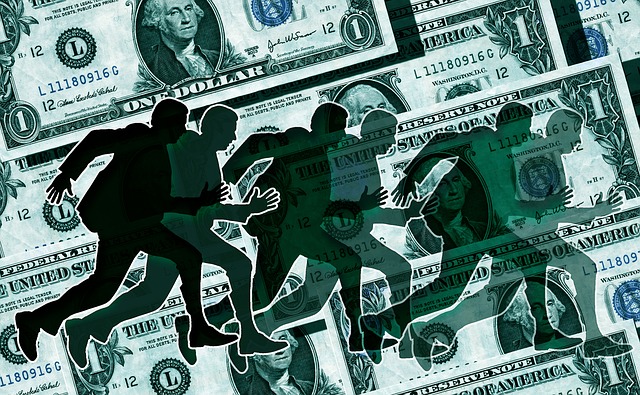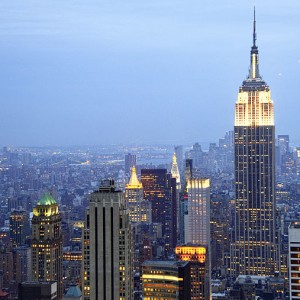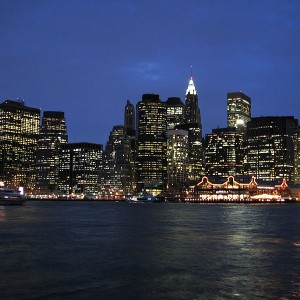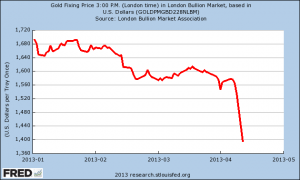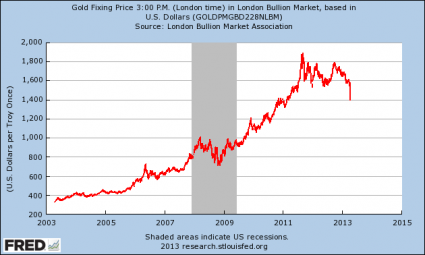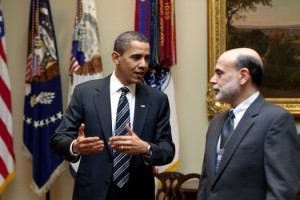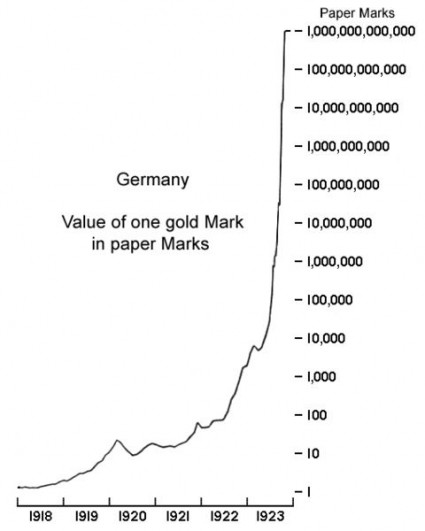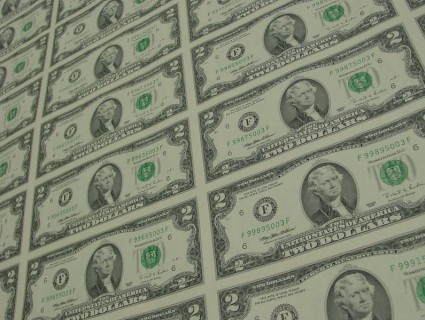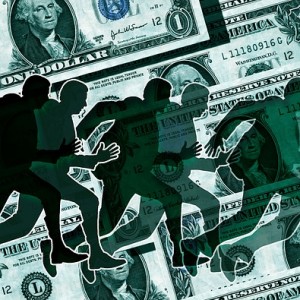 The very same people that caused the last economic crisis have created a 278 TRILLION dollar derivatives time bomb that could go off at any moment. When this absolutely colossal bubble does implode, we are going to be faced with the worst economic crash in the history of the United States. During the last financial crisis, our politicians promised us that they would make sure that “too big to fail” would never be a problem again. Instead, as you will see below, those banks have actually gotten far larger since then. So now we really can’t afford for them to fail. The six banks that I am talking about are JPMorgan Chase, Citibank, Goldman Sachs, Bank of America, Morgan Stanley and Wells Fargo. When you add up all of their exposure to derivatives, it comes to a grand total of more than 278 trillion dollars. But when you add up all of the assets of all six banks combined, it only comes to a grand total of about 9.8 trillion dollars. In other words, these “too big to fail” banks have exposure to derivatives that is more than 28 times greater than their total assets. This is complete and utter insanity, and yet nobody seems too alarmed about it. For the moment, those banks are still making lots of money and funding the campaigns of our most prominent politicians. Right now there is no incentive for them to stop their incredibly reckless gambling so they are just going to keep on doing it.
The very same people that caused the last economic crisis have created a 278 TRILLION dollar derivatives time bomb that could go off at any moment. When this absolutely colossal bubble does implode, we are going to be faced with the worst economic crash in the history of the United States. During the last financial crisis, our politicians promised us that they would make sure that “too big to fail” would never be a problem again. Instead, as you will see below, those banks have actually gotten far larger since then. So now we really can’t afford for them to fail. The six banks that I am talking about are JPMorgan Chase, Citibank, Goldman Sachs, Bank of America, Morgan Stanley and Wells Fargo. When you add up all of their exposure to derivatives, it comes to a grand total of more than 278 trillion dollars. But when you add up all of the assets of all six banks combined, it only comes to a grand total of about 9.8 trillion dollars. In other words, these “too big to fail” banks have exposure to derivatives that is more than 28 times greater than their total assets. This is complete and utter insanity, and yet nobody seems too alarmed about it. For the moment, those banks are still making lots of money and funding the campaigns of our most prominent politicians. Right now there is no incentive for them to stop their incredibly reckless gambling so they are just going to keep on doing it.
So precisely what are “derivatives”? Well, they can be immensely complicated, but I like to simplify things. On a very basic level, a “derivative” is not an investment in anything. When you buy a stock, you are purchasing an ownership interest in a company. When you buy a bond, you are purchasing the debt of a company. But a derivative is quite different. In essence, most derivatives are simply bets about what will or will not happen in the future. The big banks have transformed Wall Street into the biggest casino in the history of the planet, and when things are running smoothly they usually make a whole lot of money.
But there is a fundamental flaw in the system, and I described this in a previous article…
The big banks use very sophisticated algorithms that are supposed to help them be on the winning side of these bets the vast majority of the time, but these algorithms are not perfect. The reason these algorithms are not perfect is because they are based on assumptions, and those assumptions come from people. They might be really smart people, but they are still just people.
Today, the “too big to fail” banks are being even more reckless than they were just prior to the financial crash of 2008.
As long as they keep winning, everyone is going to be okay. But when the time comes that their bets start going against them, it is going to be a nightmare for all of us. Our entire economic system is based on the flow of credit, and those banks are at the very heart of that system.
In fact, the five largest banks account for approximately 42 percent of all loans in the United States, and the six largest banks account for approximately 67 percent of all assets in our financial system.
So that is why they are called “too big to fail”. We simply cannot afford for them to go out of business.
As I mentioned above, our politicians promised that something would be done about this. But instead, the four largest banks in the country have gotten nearly 40 percent larger since the last time around. The following numbers come from an article in the Los Angeles Times…
Just before the financial crisis hit, Wells Fargo & Co. had $609 billion in assets. Now it has $1.4 trillion. Bank of America Corp. had $1.7 trillion in assets. That’s up to $2.1 trillion.
And the assets of JPMorgan Chase & Co., the nation’s biggest bank, have ballooned to $2.4 trillion from $1.8 trillion.
During this same time period, 1,400 smaller banks have completely disappeared from the banking industry.
So our economic system is now more dependent on the “too big to fail” banks than ever.
To illustrate how reckless the “too big to fail” banks have become, I want to share with you some brand new numbers which come directly from the OCC’s most recent quarterly report (see Table 2)…
JPMorgan Chase
Total Assets: $2,573,126,000,000 (about 2.6 trillion dollars)
Total Exposure To Derivatives: $63,600,246,000,000 (more than 63 trillion dollars)
Citibank
Total Assets: $1,842,530,000,000 (more than 1.8 trillion dollars)
Total Exposure To Derivatives: $59,951,603,000,000 (more than 59 trillion dollars)
Goldman Sachs
Total Assets: $856,301,000,000 (less than a trillion dollars)
Total Exposure To Derivatives: $57,312,558,000,000 (more than 57 trillion dollars)
Bank Of America
Total Assets: $2,106,796,000,000 (a little bit more than 2.1 trillion dollars)
Total Exposure To Derivatives: $54,224,084,000,000 (more than 54 trillion dollars)
Morgan Stanley
Total Assets: $801,382,000,000 (less than a trillion dollars)
Total Exposure To Derivatives: $38,546,879,000,000 (more than 38 trillion dollars)
Wells Fargo
Total Assets: $1,687,155,000,000 (about 1.7 trillion dollars)
Total Exposure To Derivatives: $5,302,422,000,000 (more than 5 trillion dollars)
Compared to the rest of them, Wells Fargo looks extremely prudent and rational.
But of course that is not true at all. Wells Fargo is being very reckless, but the others are being so reckless that it makes everyone else pale in comparison.
And these banks are not exactly in good shape for the next financial crisis that is rapidly approaching. The following is an excerpt from a recent Business Insider article…
The New York Times isn’t so sure about the results from the Federal Reserve’s latest round of stress tests.
In an editorial published over the weekend, The Times cites data from Thomas Hoenig, vice chairman of the FDIC, who, in contrast to the Federal Reserve, found that capital ratios at the eight largest banks in the US averaged 4.97% at the end of 2014, far lower than the 12.9% found by the Fed’s stress test.
That doesn’t sound good.
So what is up with the discrepancy in the numbers? The New York Times explains…
The discrepancy is due mainly to differing views of the risk posed by the banks’ vast holdings of derivative contracts used for hedging and speculation. The Fed, in keeping with American accounting rules and central bank accords, assumes that gains and losses on derivatives generally net out. As a result, most derivatives do not show up as assets on banks’ balance sheets, an omission that bolsters the ratio of capital to assets.
Mr. Hoenig uses stricter international accounting rules to value the derivatives. Those rules do not assume that gains and losses reliably net out. As a result, large derivative holdings are shown as assets on the balance sheet, an addition that reduces the ratio of capital to assets to the low levels reported in Mr. Hoenig’s analysis.
Derivatives, eh?
Very interesting.
And you know what?
The guys running these big banks can see what is coming.
Just consider the words that JPMorgan Chase chairman and CEO Jamie Dimon wrote to his shareholders not too long ago…
Some things never change — there will be another crisis, and its impact will be felt by the financial market.
The trigger to the next crisis will not be the same as the trigger to the last one – but there will be another crisis. Triggering events could be geopolitical (the 1973 Middle East crisis), a recession where the Fed rapidly increases interest rates (the 1980-1982 recession), a commodities price collapse (oil in the late 1980s), the commercial real estate crisis (in the early 1990s), the Asian crisis (in 1997), so-called “bubbles” (the 2000 Internet bubble and the 2008 mortgage/housing bubble), etc. While the past crises had different roots (you could spend a lot of time arguing the degree to which geopolitical, economic or purely financial factors caused each crisis), they generally had a strong effect across the financial markets
In the same letter, Dimon mentioned “derivatives moved by enormous players and rapid computerized trades” as part of the reason why our system is so vulnerable to another crisis.
If this is what he truly believes, why is his firm being so incredibly reckless?
Perhaps someone should ask him that.
Interestingly, Dimon also discussed the possibility of a Greek exit from the eurozone…
“We must be prepared for a potential exit,” J. P. Morgan Chief Executive Officer Jamie Dimon said. in his annual letter to shareholders. “We continually stress test our company for possible repercussions resulting from such an event.”
This is something that I have been warning about for a long time.
And of course Dimon is not the only prominent banker warning of big problems ahead. German banking giant Deutsche Bank is also sounding the alarm…
With a U.S. profit recession expected in the first half of 2015 and investors unlikely to pay up for stocks, the risk of a stock market drop of 5% to 10% is rising, Deutsche Bank says.
That’s the warning Deutsche Bank market strategist David Bianco zapped out to clients today before the opening bell on Wall Street.
Bianco expects earnings for the broad Standard & Poor’s 500-stock index to contract in the first half of 2015 — the first time that’s happened since 2009 during the financial crisis. And the combination of soft earnings and his belief that investors won’t pay top dollar for stocks in a market that is already trading at above-average valuations is a recipe for a short-term pullback on Wall Street.
The truth is that we are in the midst of a historic stock market bubble, and we are witnessing all sorts of patterns in the financial markets which also emerged back in 2008 right before the financial crash in the fall of that year.
When some of the most prominent bankers at some of the biggest banks on the entire planet start issuing ominous warnings, that is a clear sign that time is running out. The period of relative stability that we have been enjoying has been fun, and hopefully it will last just a little while longer. But at some point it will end, and then the pain will begin.
